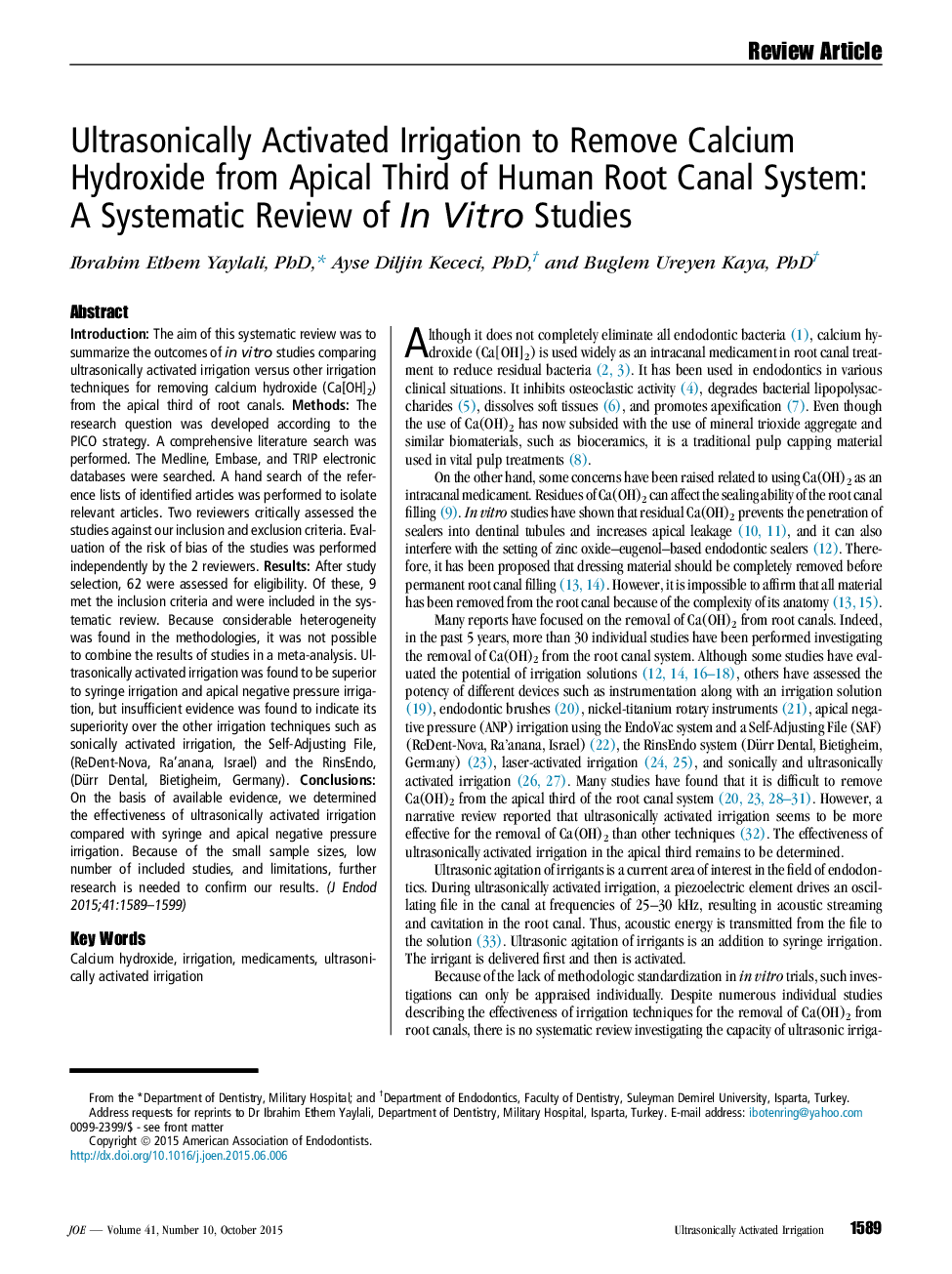| Article ID | Journal | Published Year | Pages | File Type |
|---|---|---|---|---|
| 3148056 | Journal of Endodontics | 2015 | 11 Pages |
•The current evidence points out that ultrasonically activated irrigation removes more calcium hydroxide (Ca[OH]2) from the apical third of the root canal than conventional syringe irrigation.•The current evidence indicates that ultrasonically activated irrigation removes more Ca(OH)2 from the apical third of the root canal than apical negative pressure irrigation.•The review detected no evidence describing the superiority of ultrasonically activated irrigation over the other irrigation techniques investigated.
IntroductionThe aim of this systematic review was to summarize the outcomes of in vitro studies comparing ultrasonically activated irrigation versus other irrigation techniques for removing calcium hydroxide (Ca[OH]2) from the apical third of root canals.MethodsThe research question was developed according to the PICO strategy. A comprehensive literature search was performed. The Medline, Embase, and TRIP electronic databases were searched. A hand search of the reference lists of identified articles was performed to isolate relevant articles. Two reviewers critically assessed the studies against our inclusion and exclusion criteria. Evaluation of the risk of bias of the studies was performed independently by the 2 reviewers.ResultsAfter study selection, 62 were assessed for eligibility. Of these, 9 met the inclusion criteria and were included in the systematic review. Because considerable heterogeneity was found in the methodologies, it was not possible to combine the results of studies in a meta-analysis. Ultrasonically activated irrigation was found to be superior to syringe irrigation and apical negative pressure irrigation, but insufficient evidence was found to indicate its superiority over the other irrigation techniques such as sonically activated irrigation, the Self-Adjusting File, (ReDent-Nova, Ra'anana, Israel) and the RinsEndo, (Dürr Dental, Bietigheim, Germany).ConclusionsOn the basis of available evidence, we determined the effectiveness of ultrasonically activated irrigation compared with syringe and apical negative pressure irrigation. Because of the small sample sizes, low number of included studies, and limitations, further research is needed to confirm our results.
